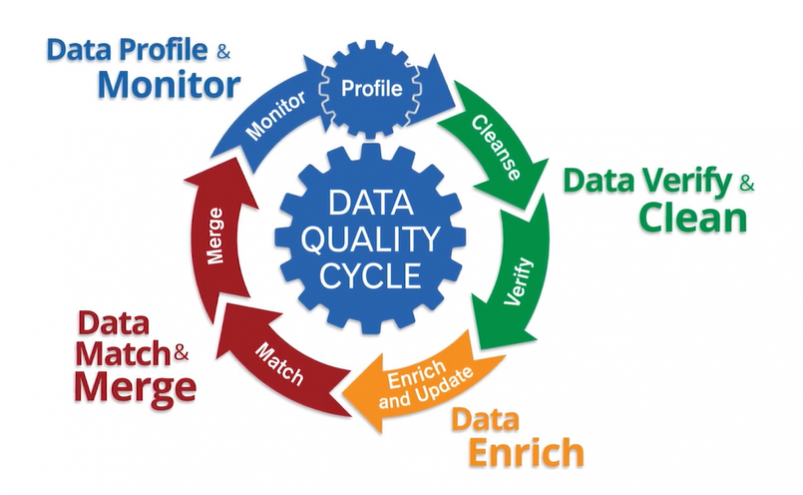How to Maximise Trading During the Festive Season
The festive season is vastly creeping upon us, with Black Friday around the corner, retailers must turn their throughs to what will be their most profitable period – quarter 4.
In normal circumstances during Black Friday and even Cyber Monday, we would see a barrage of sale hungry consumers rushing around the high street taking advantage of their favourite brick and motor stores to an over surge of eCommerce sales.
Brands tend to now take advantage of the “whole” buying period by continuing promotions and discounts, encouraging further spending during Christmas, but even without the efforts, the traditional Christmas period as we all know is another busy time for retailers.
The stigma in your customer data
Marketing being a perfect example to driving these sales and promotions over the festive period must understand that although splitting their annual budgets and running rather extensive campaigns quarter to quarter, it’s common to see the highest spend leading up to Q4 to help maximise those profits leading up and during the festive season.
What we see as a stigma that tends to hold retailers back from obtaining higher sales growth is customer data they are working with. Generally having “fragmented” data as a common mishap. Which in turn can make these prolonged campaigns in the second half of the year less effective as they should be. This can be something to consider when giants like amazon are accounting for as much as 54.9% in sales during this period.
Retailers first must understand where their customers are interacting and engaging, which tends to widen over a selection of channels. These include website and online stores, apps, social media, customer service and technical departments right down to the actual physical brick and motor stores.
During engagement on these channels, customers and prospects will leave a diverse set of information, specific and pertinent, which trends on the individual’s activity over that channel. The issue is that multiple departments may be gathering this information which can cause confusion, duplication of records and inconsistencies over the whole customer life cycle.
Clean and verified data
Another issue that tends to bring retailers down is being able to obtain clean and verified contact data on their customers
There are two scenarios:
Customers onboarding and entering systems & databases
Typically, when they onboard into the organisation’s systems via purchase, registration, signup, enquiry, or any form of inputting their data
– Type the incorrect or misspelt information
– Missing information
– Formatting issues such as casing and standardisation
– Data in the wrong fields
– Same information but structured differently across various channels and systems
– Conflicting info (determining which one is right or wrong or both right)
Current Customer records going stale once entered into systems & databases
24% of database records go stale each year due to the following,
– Moving Address
– Changing status (eg married)
– Email
– Changing jobs
– Phone numbers
– Suppress/die
– DMA and preferences
Which is why it is equally as important to have clarity and consistency on your customer data so each department can deliver better results leading to overall increased revenue.
Data deduplication, matching & merging
While 24% of customer data can go stale over time, in our experience we also see that a further 10% of databases contain duplicated records, this is enough to impact the delivery of that single customer view every retailer strives for.
As well as seeing customers duplicating throughout departments and various systems in an organisation, this can lead to potentially seeing contacts as a new customer, another as a loyal customer, another as prospect which leads to confusion and potential for poor communication which is a waste on spending and risks alienating customers.
Enrich & enhance your data
When it comes to data, the more you get out of it, the more you can do with it – data enrichment and enhancement is a great way to truly understand your customers on various levels. Such variants like geolocation to pinpoint location, demographic and firmographic insight, IP location to missing contact information can not only give you improved targeting for better direct engagement but can find new customers just like your best ones.
Data audits and health checks
We recommend that all retailers have their data audited once every so often so they can get a clearer picture of the overall health of the data they are working with. This is great to identify any flaws and inefficiencies that may be causing issues which be now you should know, leads to further back draws to business success.
Summary
Retailers must understand that the accuracy of their customer data directly impacts any business activity downstream from reporting and analytics, segmentation and targeting, marketing all the way down to logistics, delivery, and customer care. So, if your data is inconsistent, everything is going to suffer.
Below is the data quality life cycle, Melissa can put in place for any retailer looking to achieve more. In doing so, the one aspect that every retailer strives for again is that single customer view or that one golden record that aggregates all the additional important information about a customer or prospect so you that all departments have a clear view and understanding of their overall journey with a retailer.
This in turn allows retailers to make sensible business decisions when communicating to their customers to give them an outstanding experience in the build-up to the festive season.
